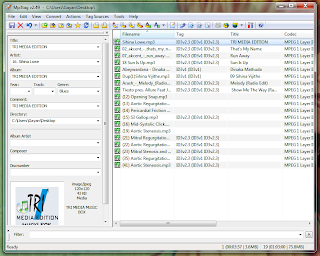

It can overwrite everything, overwrite empty fields only, or don’t change existing tags at all.īelow, there are names of ID3 tag fields with the corresponding variables and checkboxes. It defines what the program should do with existing ID3 tags. On the right pane, take a look at the “Fields from tags” list. Registered users can add custom formats to the list. The “Format” field is editable, which means that you can compose it from variables according to the information in your filenames. which part goes into a certain ID3 tag field. It tells the program how filenames (and folder names) should be read, i.e. This latter may be useful, if your files have all kinds of information in the single “Title” field (which is not unusual).ĭirectly under the “Format” label, there is a dropdown list with ‘%’ symbols followed by letters. The program can also generate tags from existing tag fields. The second (lower) dropdown list states that we are generating tags from filenames. In the left upper corner of the window, there is a couple of dropdown lists labeled “Format”. Make sure that the “Tags generator” tab is selected. Select files, click “Generate tags” on the toolbar of “ID3 tags” area:Ī new window pops up. If our ID3 tags are empty, we can populate them quite easily! The corresponding format would be: %G\%A\%Y %L\%# - %T

Here, folder names and the filename contain information about genre, artist, year, album, track number, and title. Consider the following example: C:\Music\Hard Rock\Deep Purple\1974 Stormbringer\09 - Soldier of Fortune.mp3 For example, you may want to import tags from a database, or extract ID3 info from filenames.įilenames and folder names may contain significant amount of information about files. Using mp3Tag Pro, you can easily process thousands music files simultaneously. The MP3 tag editor is a tool for editing tags and for organizing collections of MP3, WMA, WAV, FLAC, APE, OGG Vorbis, AAC, WavPack, MPC/MPP/MP+, and M4a/MP4 files.


 0 kommentar(er)
0 kommentar(er)
